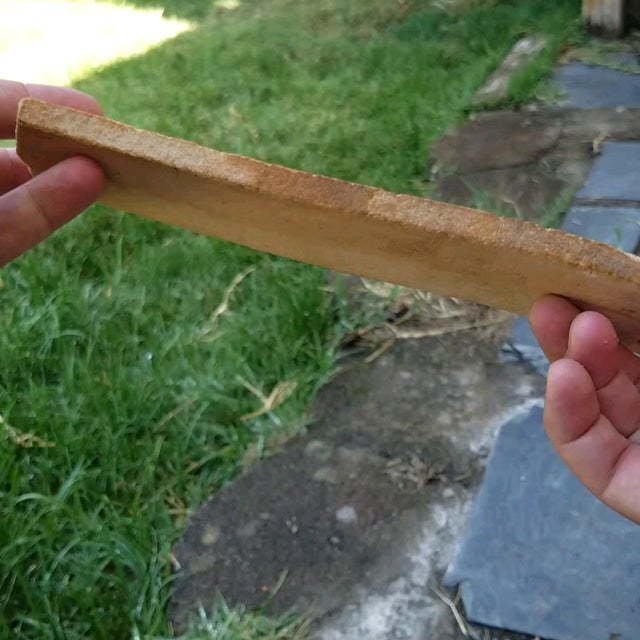Flexibility is not a trait usually associated with rocks, but there is one notable exception to the rule – itacolumite, a porous sandstone that becomes flexible when cut into thin strips.
Itacolumite is named after the place where it was originally discovered, the Pico do Itacolomi rock formation in Minas Gerais, Brazil, but it can also be found in other places around the world, such as Georgia and North Carolina in the US, and Kaliana village in India. This rock is commonly used as a construction stone; because of its good partition, it can be shaped into plates about 1 cm thick and up to 20 cm long that are then used mostly as a floor or wall revetment. However, when cut into thin strips of only a few centimeters, it displays extreme flexibility that has fascinated geologists for decades.

Photo: Reddit
According to Wikipedia, if a piece of itacolumite 30 to 60 centimeters long is left supported only at its ends, it will gradually bend under its own weight. When turned over it will straighten and bend the other way under the pull of gravity. It’s not something you usually notice in rocks, but it’s not magic, but science.
The flexibility of itacolumite has been the topic of heated debates between geologists loved many centuries. At one point in time, it was believed that the presence of thin scales of mica permitted a bit of movement between adjacent grains of quartz, but the flexibility of this intriguing rock seems to have a different cause.
Apparently, the porosity of itacolumite allows interstitial movement, while the hinge-like joints by which the sand particles are connected hold them together in spite of the displacement.
Bending a piece of itacolumite has been described as a trippy experience by those lucky enough to hold a strip of the quartzite in their hands, as it certainly has the weight of a rock, but flexes easily when pressure is applied to its ends.












